

While you drive, there’s a lot happening, so a second pair of eyes can help you stay safe. A dash cam provides this extra vigilance and helps give you peace of mind while out on the road. The best dash cams monitor in high-res video what’s happening while you’re behind the wheel, with timestamps and GPS coordinates. They can even record while your car is parked, helping you keep tabs on your car while you’re away.
When choosing the best dash cam for your needs you should first consider if you want a front, front/interior, or front/rear model. Additionally, you’ll want to decide on how wide a viewing angle you’ll need. Then there are special features to take into account, such as voice control or parking assist. Since there are a number of reasons to use a dash cam, we understand that there isn’t a one-size-fits-all model. With that in mind, we’ve curated a list of the best dash cams of all types with various features and prices below.
PROMOTION
70mai A810 | Ultra HD 4K Dual Camera

Extreme Clarity at each side. Extreme Security by your side. 70mai Ultra HD 4K A810 boosts day and night vision to the next level with Sony’s best in class STARVIS 2 IMX 678 image sensor and 70mai’s self-developed HDR algorithm.
Exclusive 20% Off with Code: PCWorld20
For even more information on what to look for when buying a dash cam, scroll to our buyer’s guide under our best picks. And after you’ve bought a dash cam, save yourself some time and frustration by reading our guide on how to install a dash cam.
Updated 2/29/2024: Check out our review of the Ombar 4K Dash Cam. At $140 it’s an affordable 2-channel (front and back) model that’s easy to install and provides strong 4K front captures, even if the back captures are a bit lacking. Definitely a good bargain buy.
Nextbase 222X – Best budget front/rear dash cam

Pros
Good front/rear-view day video Decent front/rear-view night captures 48-hour, battery-supported parking mode and after-incident capture
Cons
Modest video quality compared to pricier Nextbase models Modular port, but no add-on modules No GPS Price When Reviewed:$99.99Best Prices Today:$99.99 at Nextbase$99.99 at Walmart
If you really want to save money, this Walmart-exclusive Nextbase 222X front-and-rear camera duo offers great value. The 1080p/720p video is a compromise, but video quality is still good, it has a nice magnetic mount, a clear 2.5-inch screen, and a battery-supported parking mode.
Read our full Nextbase 222X Dash Cam review
70mai 4K A810 – Best midrange front/rear dash cam
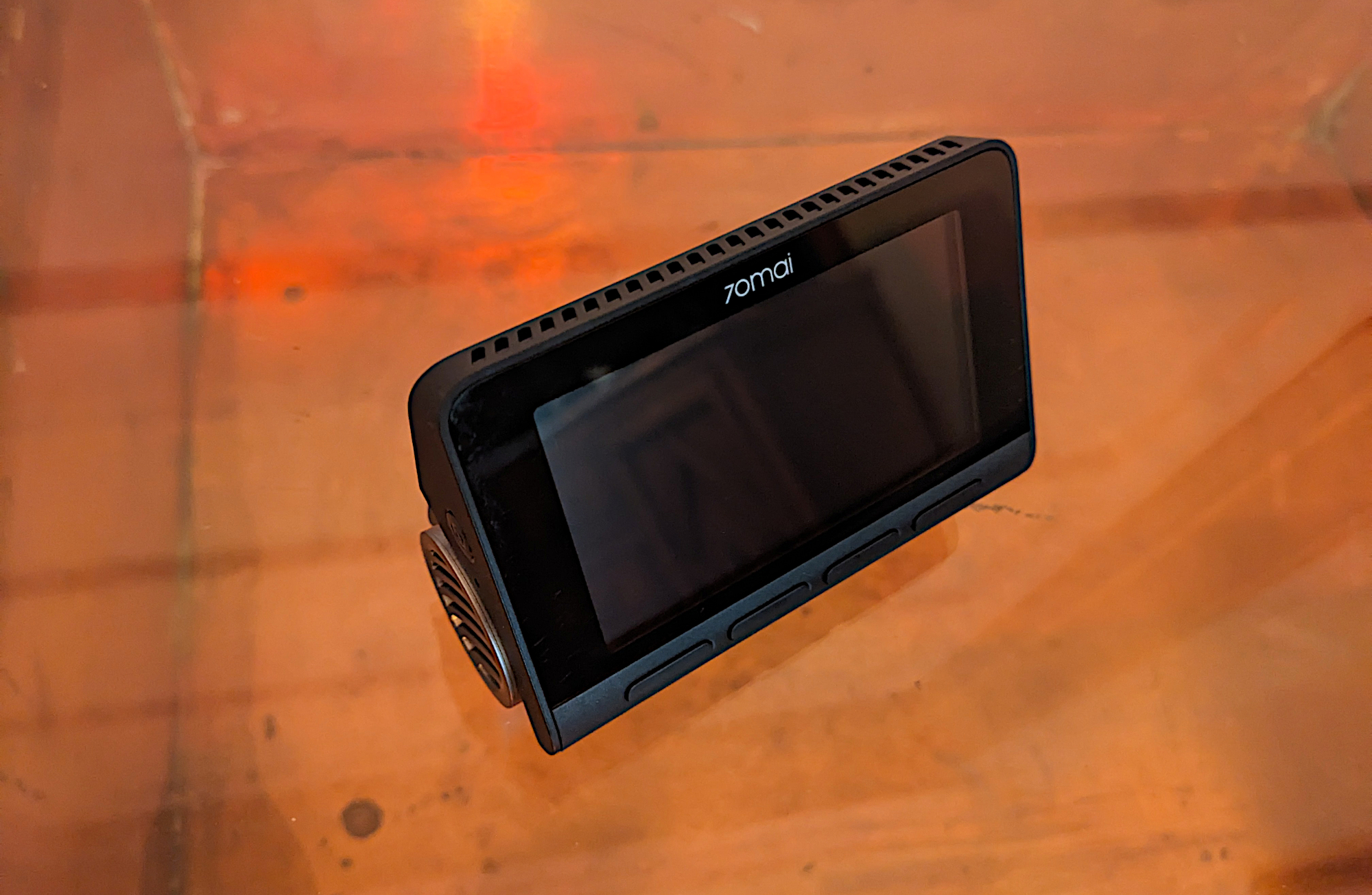
Pros
Excellent front captures GPS, Wi-Fi, and Bluetooth connectivity Phone app
Cons
So-so rear capture processing Non-standard rear camera cable Price When Reviewed:$179Best Prices Today:$152.99 at 70mai$179.99 at Amazon
The market today is now saturated with 4K-front/1080p-rear camera setups, but the 70mai 4K A810 stands out from the rest. It’s absolutely loaded with great features such as onboard GPS, Wi-Fi, and Bluetooth for phone connectivity. The 3-inch IPS display provides a colorful and crisp image and it can be powered either via USB Type-A or Type-C cables. It also gives you advanced features like lane-departure and forward-collision warnings.
All of that plus the A810 captures crystal-clear 4K images with the front camera and 1080p with the rear camera. Most other competitors don’t offer nearly the same features or image quality for the price either. For these reasons, the 70mai 4K A810 is an absolute midrange bargain among dual-channel dash cams.
Read our full 70mai 4K A810 dash cam review
Cobra SC 400D – Best premium front/rear dash cam
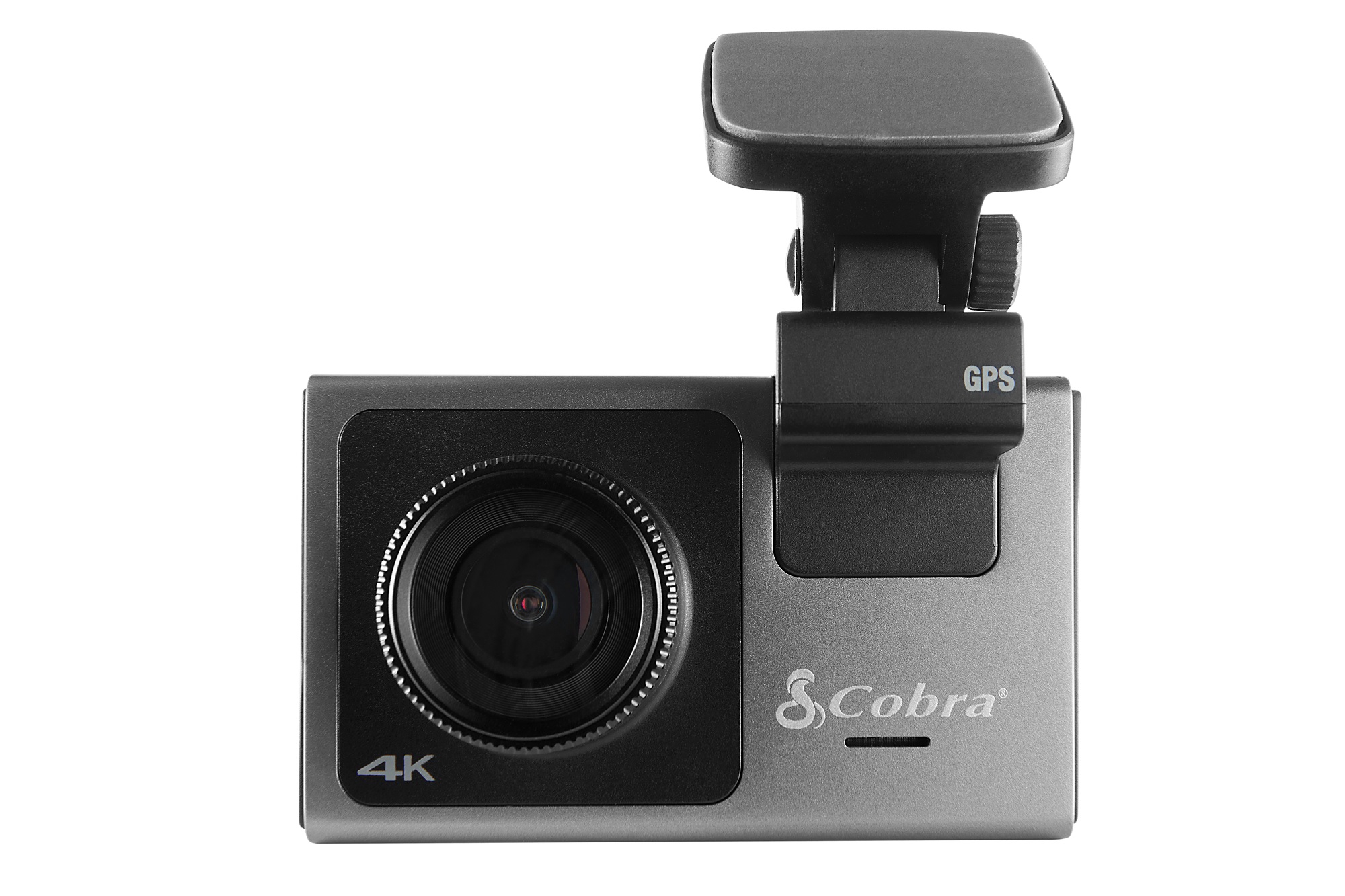
Pros
Excellent video captures, day and night, front and back 3-inch touchscreen display Voice control Alexa support (if you care) 2160p (4K UHD) if you want it
Cons
Very expensive Rear camera isn’t removable Price When Reviewed:$399.95Best Prices Today:$395.95 at Amazon$399.95 at Cobra$399.99 at Best Buy
Our review of the Cobra SC 400D left us smitten. It’s pricey, yes, but it delivers the goods with stunning images—4K for the front, 1080p in the rear—day or night. In addition to that it has all the trappings of a premium product: a sturdy magnetic mount with integrated GPS, a crisp 3-inch touchscreen display, and Alexa support for finding businesses and the like when you are on the road. It can also be expanded with an optional 120-degree FOV cam for the interior.
Read our full Cobra SC 400D review
Nextbase 622GW – Best premium front/rear runner-up
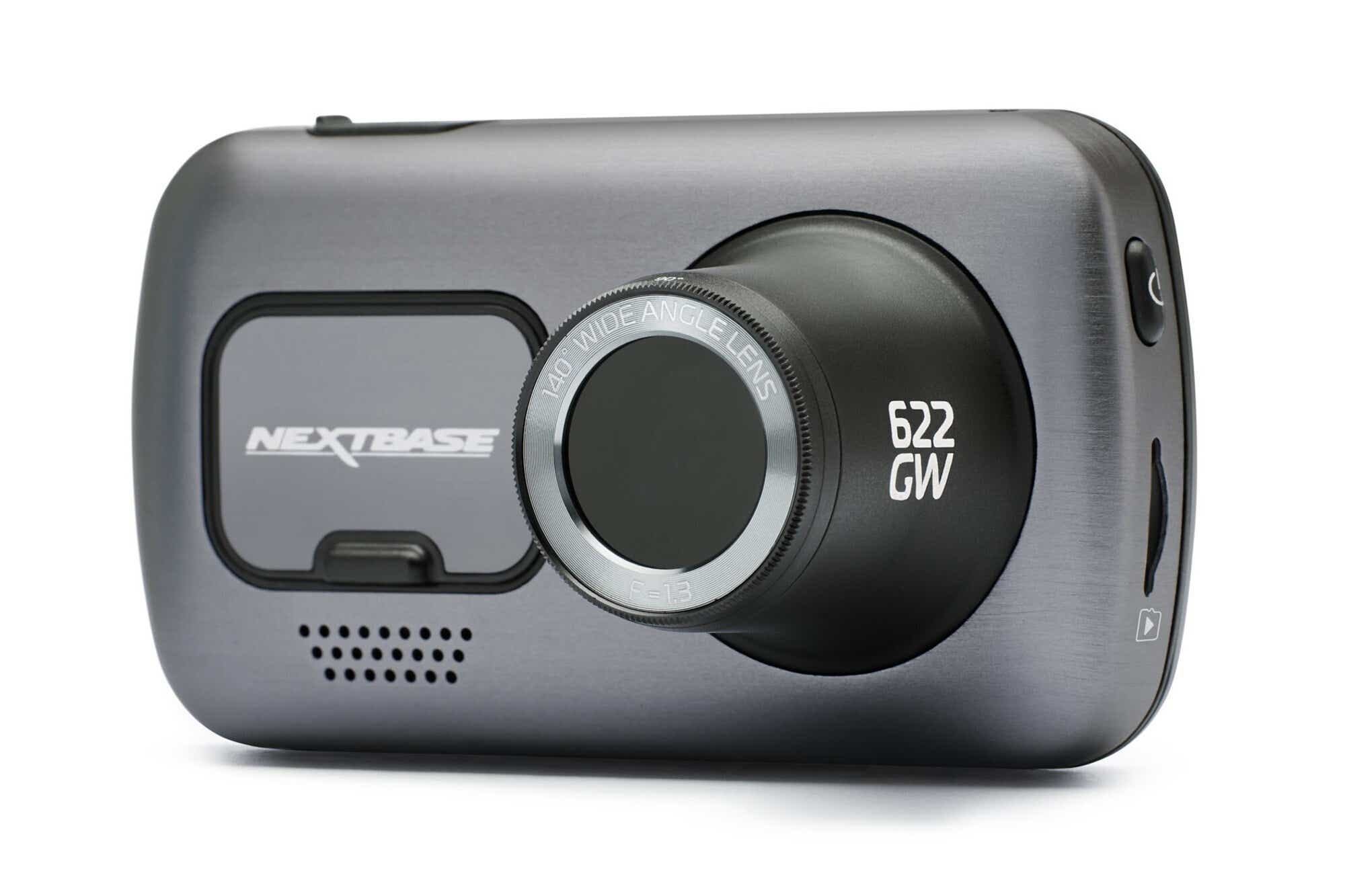
Pros
Stellar day and night captures Modular add-on 1080p cameras provide interior and rear coverage Alexa voice control and automatic emergency notifications
Cons
Expensive Price When Reviewed:$399.99Best Prices Today:$349.99 at Best Buy$399.99 at Nextbase$499.98 at Amazon
Prior to our review of the Cobra SC 400D above, the 622GW front/rear system was our hands-down favorite. And, really, it shares virtually all the same attributes as its rival—nice design and build quality, excellent day and night captures, drive mapping, a wonderful 3-inch display, emergency response to accidents, Alexa support, and the ability to add a third camera for interior views. Like the 400D, it carries a premium price tag. But in the end, you can’t go wrong with either model.
Read our full Nextbase 622GW Dash Cam review
Viofo A229 Plus – Best 3-channel dash cam
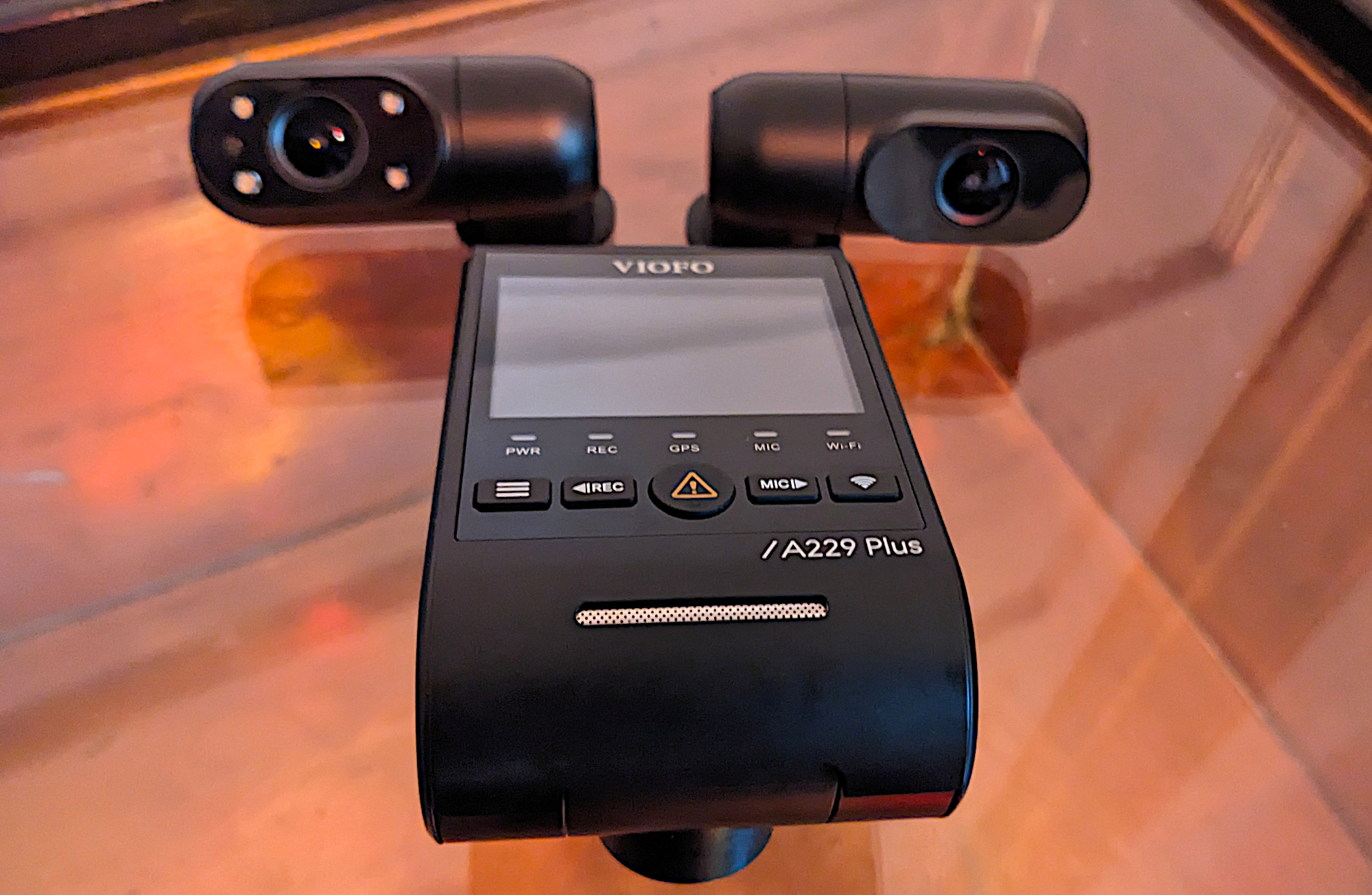
Pros
Front, interior, and rear cameras Discrete interior camera for versatile placement Colorful, detailed captures Rear captures are as good as the front captures Phone connectivity
Cons
Lots of wires to hide Price When Reviewed:$279.99Best Prices Today:$269.99 at Amazon
A dash cam is all about monitoring and recording your surroundings, and for that it’s hard to beat a 3-channel system. Combining front view, interior view, and rear view, a 3-channel dash cam makes sure nothing is missed. The Viofo A229 Plus is our pick for best 3-channel system due to strong 1440p front and rear captures, 1080p interior captures, and a whole host of great additional features.
Not only do the front and rear view cameras offer solid resolutions, but the interior cam is discreet and all are easy to install. The Viofo A229 Plus also comes with an onboard mic for recording audio or receiving voice commands — an extremely convenient feature while driving. The A229 comes with GPS tagging, motion detection, and a parking mode as well. Needless to say, it’s chock-full of amenities and features. A 3-channel dash cam might not be for everyone, but if you need one, the Viofo A229 should be at the top of your list.
Read our full Viofo A229 Plus 3-channel dash cam review
Vantrue N5 – Best for 360 degree view
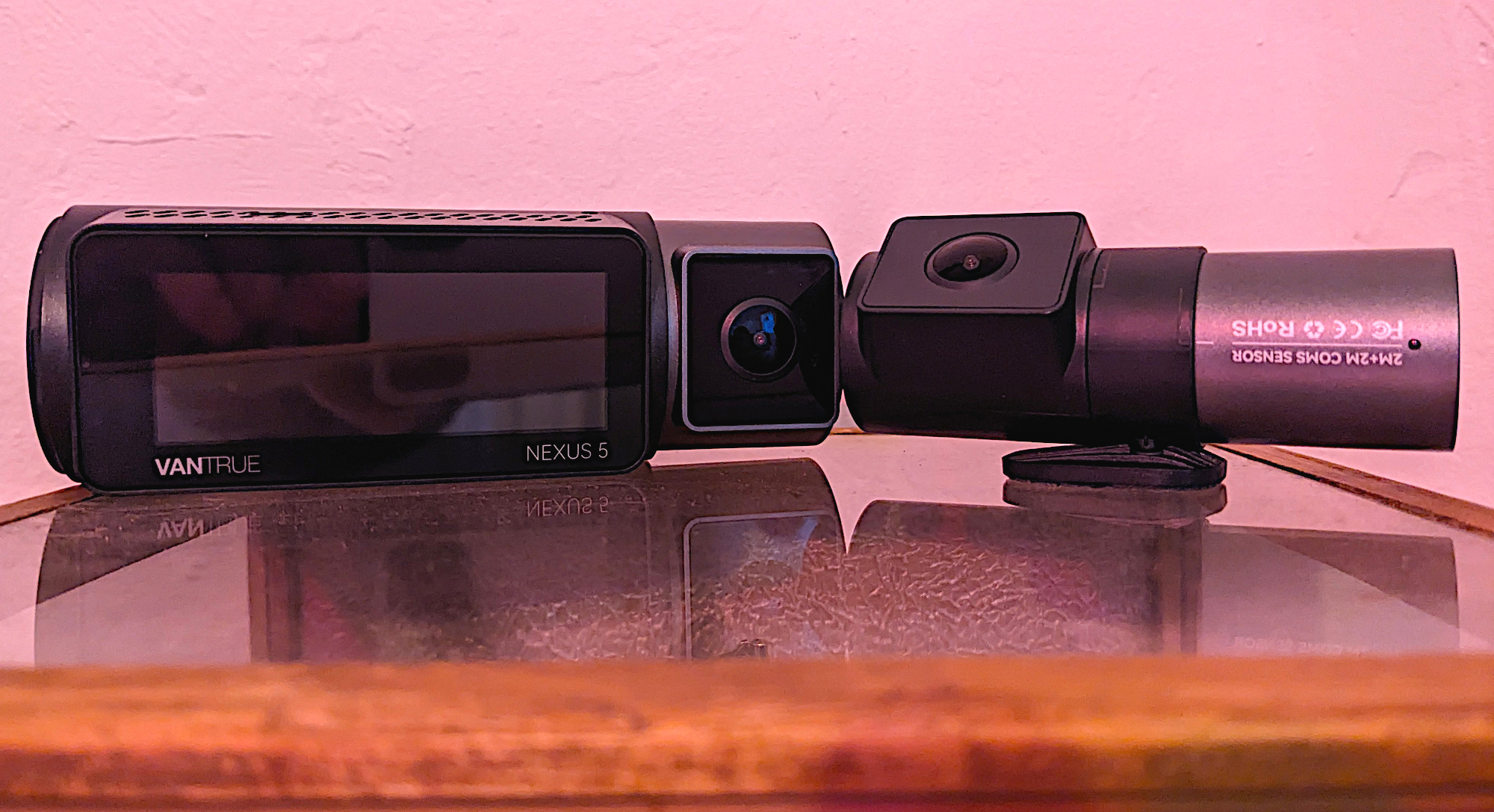
Pros
4-channel, nearly surround coverage Good captures Embedded and watermarked GPS Voice control and phone connectivity
Cons
Pricey Uses lots of storage Price When Reviewed:$399.99Best Prices Today:$399.99 at Vantrue
The Vantrue N5 offers the most complete coverage of any dash cam system we’ve ever seen. It comes with 4-channels including a front, rear, and dual cabin cameras (one in the front facing aft and another in the rear facing forwards). All of these cameras allow you to see not only what is happening outside your vehicle, but also within it, and they even catch some blind spots that front/rearview cameras might miss.
The N5 offers much more than just thorough coverage. It comes with watermarked GPS on board and excellent capture quality—the front cameras is capable of 1440p with superb night captures as well. You can also control the system via voice control and it offers great connectivity features as well. Overall, there is no other dash cam on the market that does a better job of capturing events in and around your car.
Read our full Vantrue N5 dash cam review
Miofive 4K – Best front-only dash cam
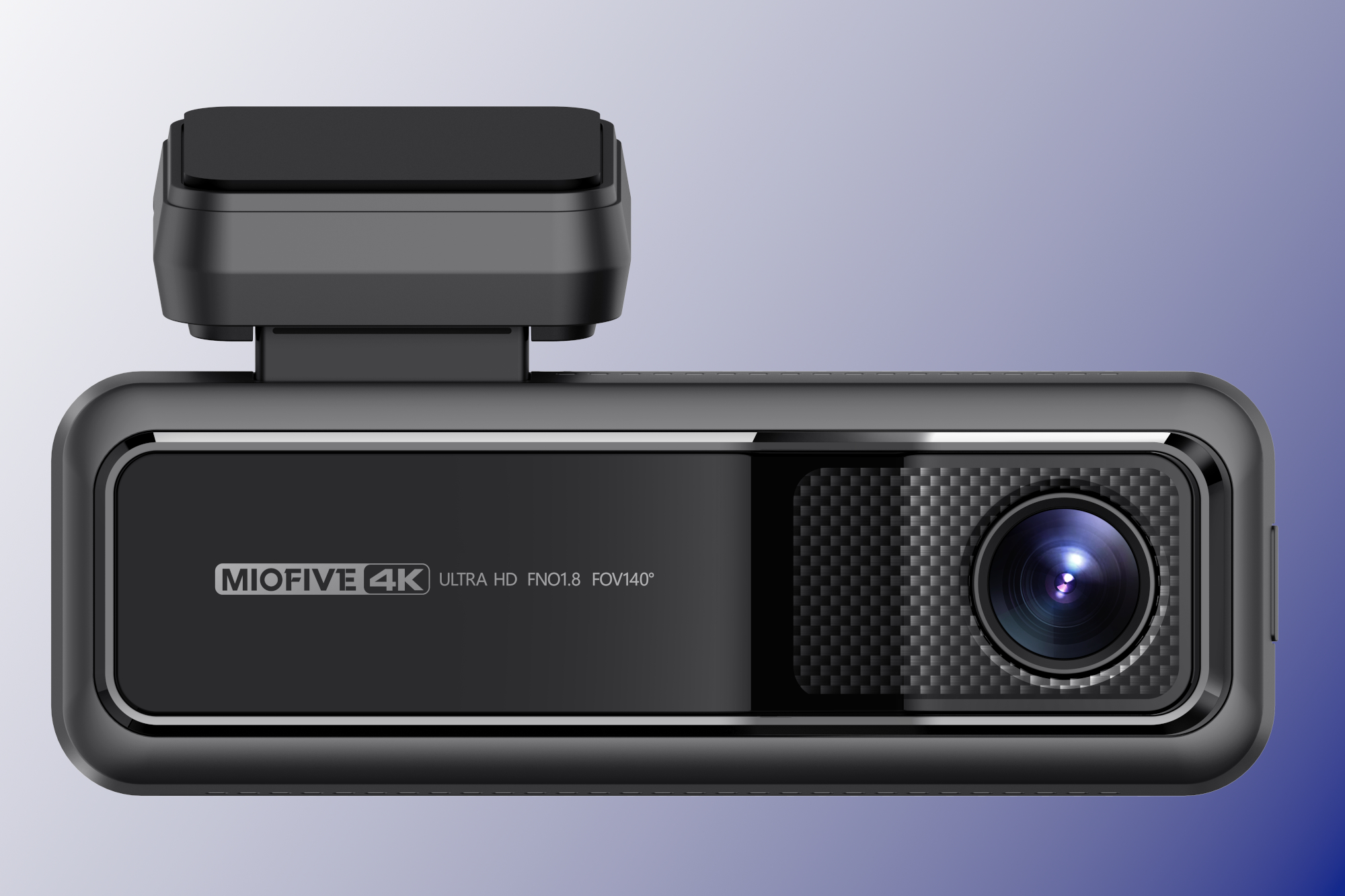
Pros
Compact, fully integrated design Very affordable for 4K with GPS Friendly voice notifications 64GB of internal storage Good day and night captures
Cons
Internal storage isn’t replaceable macOS won’t read the internal storage Price When Reviewed:149.99Best Prices Today:$129.99 at Amazon
Prior to our review of the Miofive 4K, we would have tapped the Car and Driver Eye2 Pro as the best front-only dash cam with 4K, a fine product in its own right. But the Miofive costs $100 less, and offers integrated GPS as well as great video captures, 64GB of internal storage, a compact design, friendly voice notifications, and a super straightforward setup. So not only is this our favorite front dash cam with 4K, it’s our favorite front cam overall.
Read our full $150 review
Garmin Dash Cam 57 – Best front-only runner-up
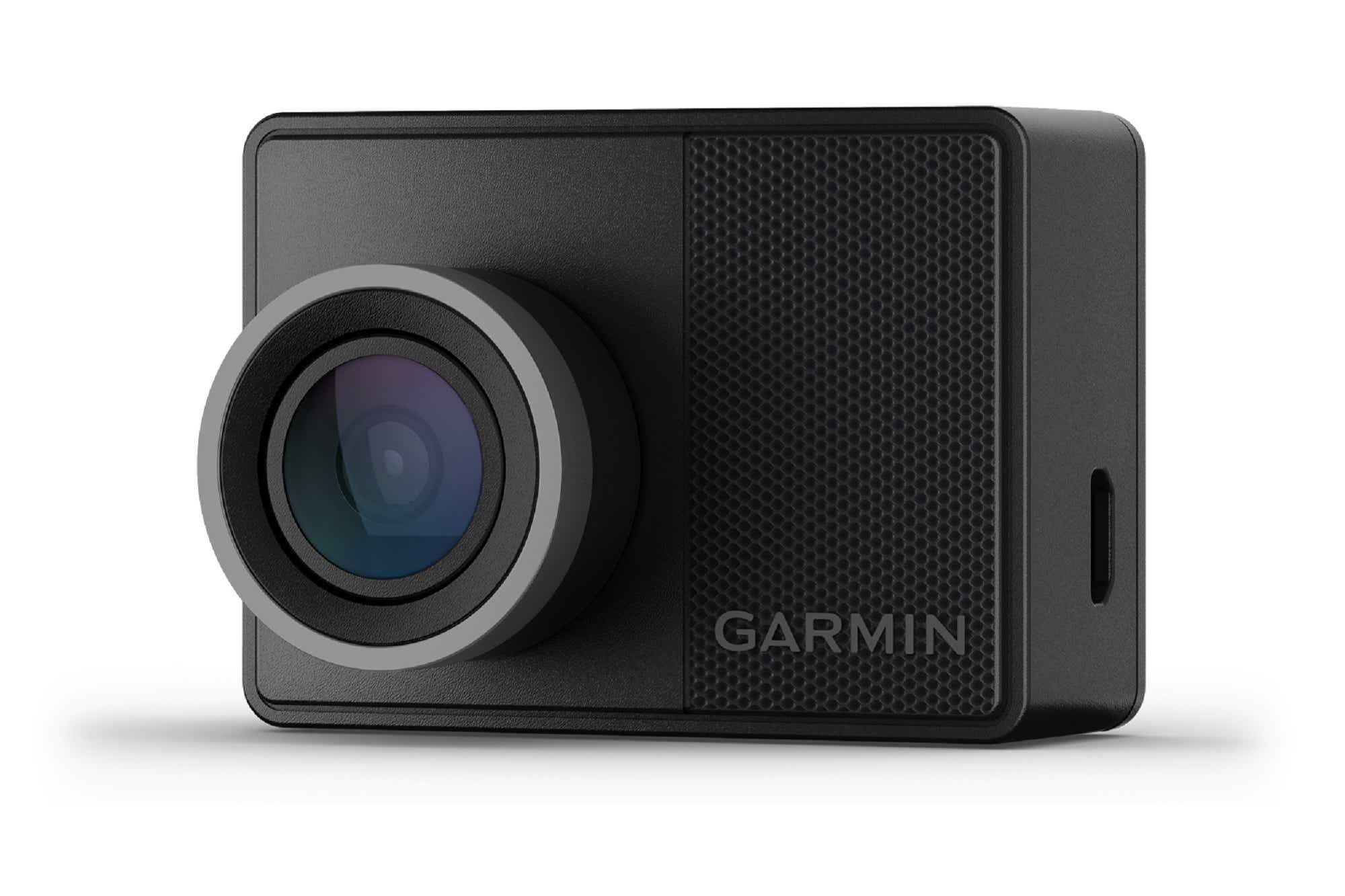
Pros
Colorful, detailed captures day and night Small enough to hide behind your mirror Super-convenient magnetic mounting Phone and cloud connectivity
Cons
No rear camera option Price When Reviewed:$229.99Best Prices Today:$227.99 at Amazon$229.99 at Best Buy$229.99 at Garmin
This small but mighty front dash cam has it all: great 1440p video with a 140-degree field of view, integrated GPS and driving assistance, good phone connectivity, an easy and convenient magnetic mounting system, and the backing of Garmin’s good name.
Read our full Garmin Dash Cam 57 review
iOttie Aivo View – Most stealth front-only cam

Pros
Easy to set up and use Very good day and night captures Magnetic mount Minimalist styling and operation
Cons
Requires iOttie account to set up and use Price When Reviewed:$149.95Best Prices Today:$139.95 at Amazon$149.95 at iOttie
For minimalist types, iOttie’s Aivo View consists of just a small camera that magnetically attached to a semi-permanent mount. It uses your phone as the interface and viewer. It can capture at up to 1600p/30 frames per second, or as low as 720p to save space on your inserted SD card. It also offers integrated GPS. The Aivo View does require that you set up an iOttie account.
If that doesn’t sit well with you, the Garmin Dash Cam Mini 2 is another excellent choice for stealth operation, measuring just 1.23 x 2.1 x 1.5 inches—small enough to remain hidden behind your sun visor. It doesn’t have GPS, however.
Read our full iOttie Aivo View dash cam review
Cobra SC 201 – Best budget front/interior dash cam
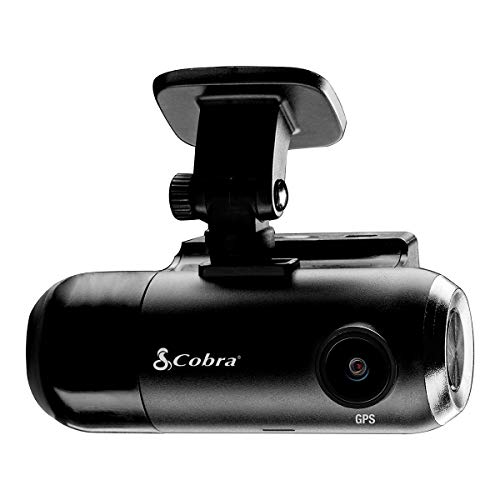
Pros
Excellent video, especially at night Front and interior cameras for ride-givers GPS with automatic setup Included 16GB SD card
Cons
No captures without 12-volt Buggy software at the time of testing App does not support smartphones running Android 7 or older Price When Reviewed:$179.95Best Prices Today:$179.95 at Amazon$179.95 at Cobra$179.99 at Best Buy
Dash cams are all about capturing the action, and few do it better than the front/interior Cobra SC 201. The exterior night video, especially, is unsurpassed in its ability to show details in dark surroundings and it offers a laundry list of features including GPS and cloud uploads. The company even includes a 16GB SD card. It’s well worth the money for what you get—just don’t try to use the cloud functionality with an older phone OS.
Read our full Cobra SC 201 Smart Dash Cam review
Garmin Dash Cam Tandem – Best front/interior dash cam
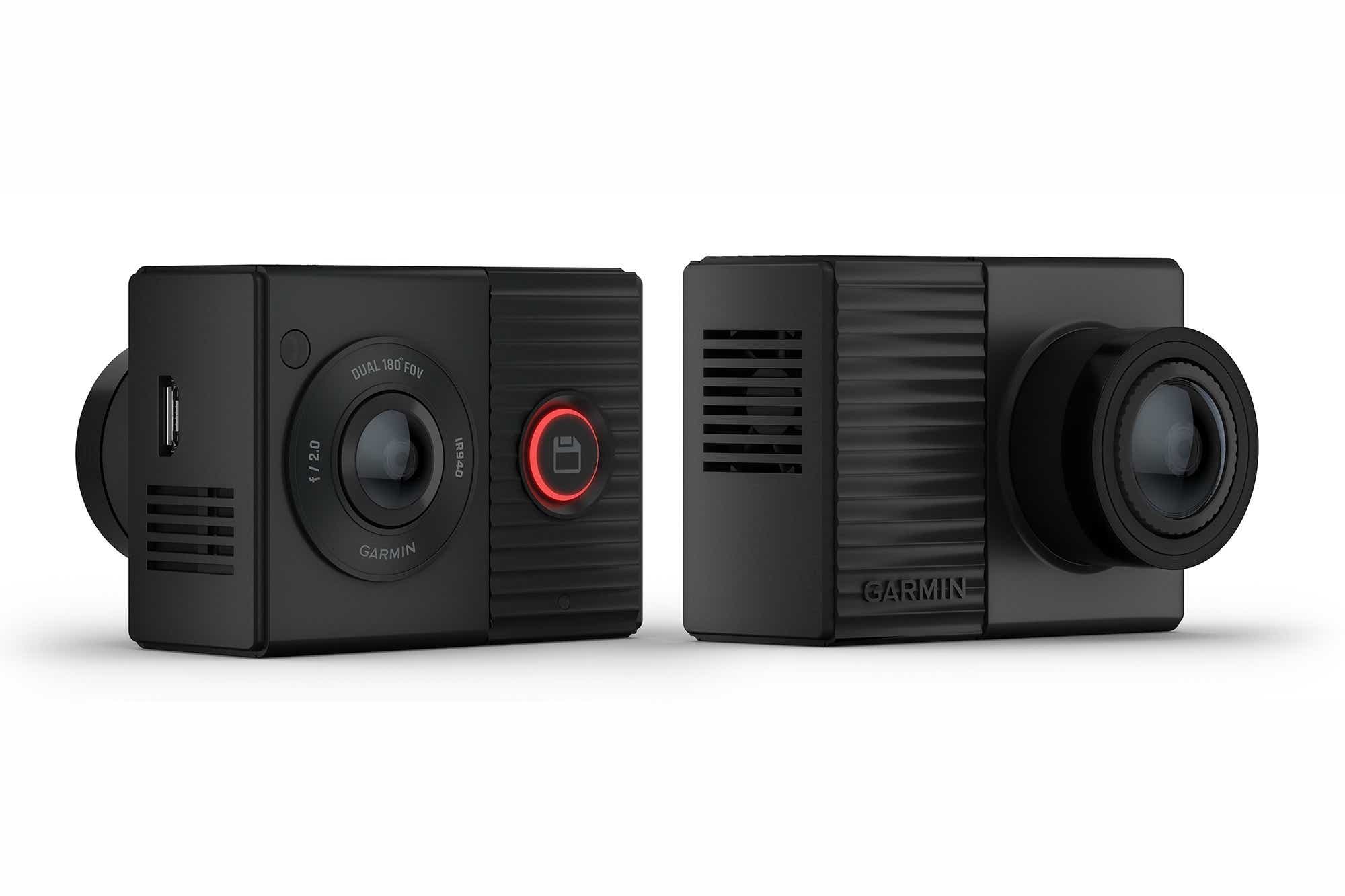
Pros
Very easy to install and use Compact profile Excellent magnetic mount 360-degree front/interior view (minus obstructions)
Cons
Expensive Average captures Price When Reviewed:$289.99Best Prices Today:$282.69 at Amazon$299.99 at GarminNot Available at Adorama
Garmin’s front/interior camera is easy to install, features a compact body that helps it avoid detection, and has an excellent magnetic mount—all useful features that make up for the average 1440p/720p video capture quality. The Tandem doesn’t have a display; it nicely uses Bluetooth (as opposed to Wi-Fi) to connect to your phone, where Garmin’s easy-to-use app lets you configure settings—although the defaults are spot-on.
Read our full Garmin Dash Cam Tandem review
70mai X200 Dash Cam Omni – Most fun dash cam
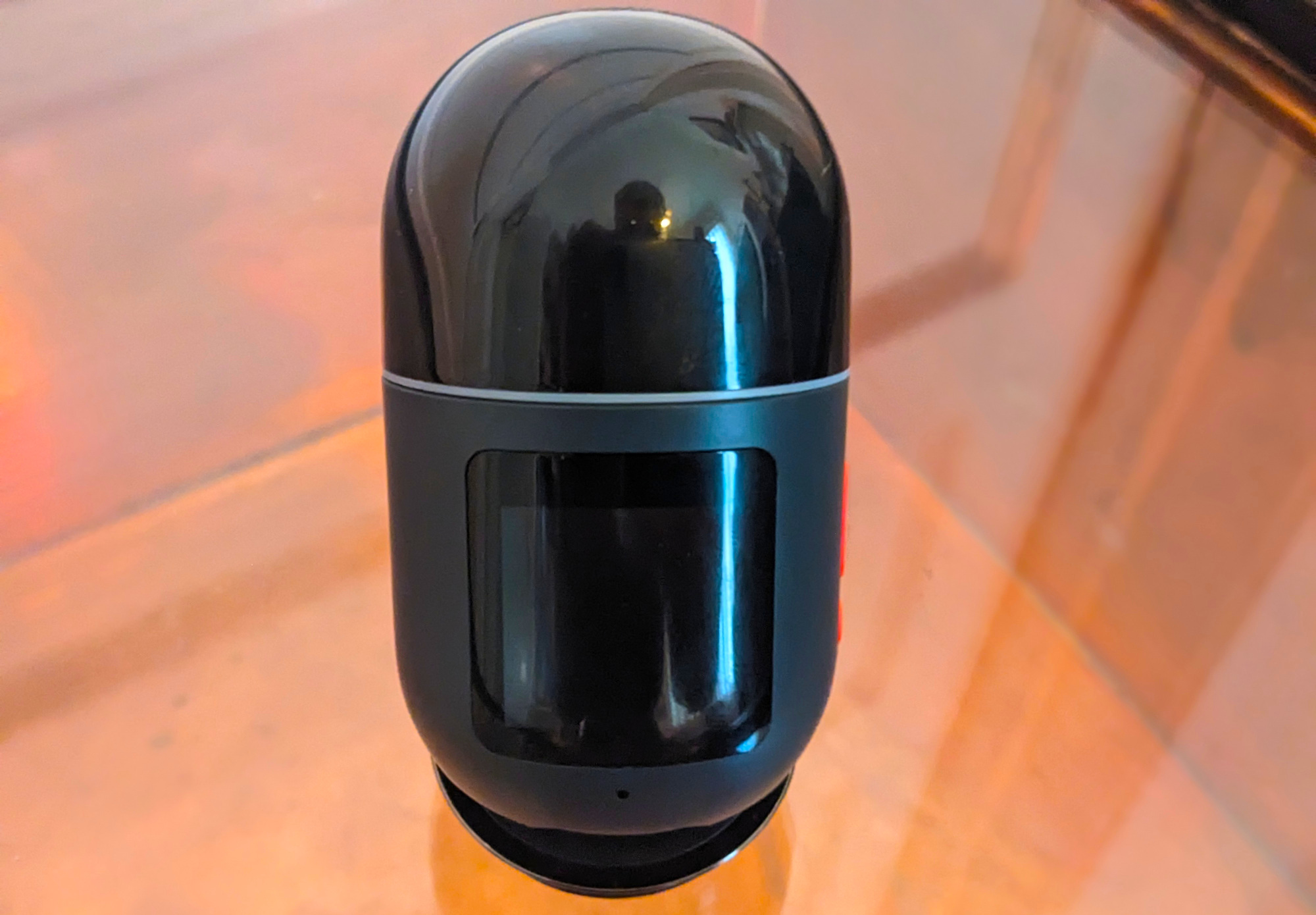
Pros
Unique, attractive design Motorized, 360 degree rotatable camera Highly detailed, colorful captures
Cons
Mild shimmer and more in captures Can’t be easily removed from vehicle Must be registered before use. Price When Reviewed:$199.99Best Prices Today:$199.99 at 70mai$199.99 at Amazon
Most dash cams have the same basic uninspired design, with very little innovation in the market. Fortunately, the 70mai X200 Dash Cam Omni has come around to fix that. Looking like something out of Wall-E, the pill-shaped camera uses a clever covering to hide a motorized 1080p, 60fps camera, that can rotate 360 degrees. It’s not just about the aesthetics with this dash cam either; the camera actually captures colorful and detailed video and images, day or night. It’s also easy to set up, has an app to control the camera, and comes with integrated GPS. It might be a bit off the beaten path compared to the standard dash cam, but the unique design and effective capture quality make the 70mai X200 much more than just a novelty.
Read our full 70mai X200 dash cam review
What to look for in a dash cam
We’ll step you through what to think about when you’re shopping for a dash cam, from video capabilities, recording options, power connections, and more.
Video capabilities
Dual-channel support: This is what you’ll need if you want to run both front and rear, or interior (cabin-view) cameras. Interior cameras are generally situated on the dash cam, but rear cameras are separate and require additional cabling. A decently wide field of view: You’ll see cameras with as little as 90-degrees field of view, but you’ll catch more of what’s around you if you go for 120 to 140 degrees. Some cameras offer 160- to 180-degree lenses. Note that the wider the field of view, the more fish-eye distortion there is, and more processing is involved to compensate.Day and night video recording (night quality is a big variant)Infrared lighting is important if you want to assure good captures of nocturnal events inside the cabin of your vehicle.HDR (high dynamic range) isn’t necessary, but it does make for more detailed video because of better contrast. It also generally indicates richer color.WDR (wide dynamic range) is much like above, except it usually refers to only color and not contrast.Do you need 4K UHD? It’s easy to fall victim to the specsmanship of a higher-res image. In our tests, the gain in detail from 4K video (2160p) can vary, but the storage investment is consistently heavy: four times the storage of 1080p, or around 1GB for every three minutes of video. For most purposes,1080p is the more frugal everyday choice. Don’t avoid 4K UHD—which is a feature in our best overall picks—but read the reviews first so you know whether the cost is justified.
Recording options
Continuous loop recording to minimize storage requirements. Video is recorded, then immediately overwritten at a specified interval unless saved. Video is saved (protected from overwriting) automatically when an incident is detected. Most dash cams will overwrite older recordings when they run out of space. Cloud storage is available with a few dash cams. Uploading to the cloud in real time is a nice hedge against damage and theft—assuming the thief isn’t smart enough to kill the dash cam immediately. It’s handy for those managing fleets of vehicles, too, as incident videos are safely stashed online.Self-powered recording when power fails, so that you can be sure to capture all of an incident. This requires a battery or large super-capacitor (see below in “Power connections”). The camera should have a setting that allows you to specify how long the camera runs off 12-volt before shutting down. Incident recording triggered by impact (G) sensors, or when in parking mode (see below), by motion detection. MicroSD card storage. Pricier dash cams bundle a storage card. Some come with larger cards, and some budget models come without. There are often bundles available with the card. Some cameras opt for hard-wired internal storage, like the Miofive 4K.
Power connections
Something most people don’t consider before they buy is that dash cams connect to a power source in your car via a physical cable. That cable can sometimes be tucked out of the way, but more likely than not you’ll have loose cable hanging somewhere. You can sometimes fix this with a longer or shorter cable (or a professional installation). Keep that in mind as you consider your power options:
Auxiliary 12-volt power (adequate): Most vendors have stuck with powering their dash cams via the auxiliary 12-volt power socket (also known as the cigarette lighter) and USB cables. It can lead to an unsightly cable run, and the power disappears when you turn off the car, but it’s universal and easy.Hard-wired 12-volt power (better): Most vendors offer kits that connect the dash cam directly to a constant 12-volt source in your wiring harness behind the dash. This provides always-on power, but it isn’t particularly easy to install.OBD-II 12-volt power (better): Outliers like the Owl and PureCam use the OBD-II connector for constant 12-volt power. OBD-II-to-USB power cables are now available separately (as an alternative to hardwiring kits that draw constant 12-volt power from the wiring harness). I recommend one with a USB Type-A port, which will accommodate any dash cam. Most of those with captive cables I’ve seen are mini-USB. The only downside is a long cable run, as the OBD-II port is usually next to the driver’s left knee, under the dash.Rearview 12-volt power (better): Another option that features a super-short cable run is powering your dash cam using your auto-dimming rearview mirror. You can find adapters for this at Dongar Technologies. If your car qualifies, this is by far your best option.Battery (or super-capacitor) power: Many dash cams come with super-capacitors, which allow the dash cam to operate for a brief period after losing regular power—such as during a collision. They don’t record for very long though, and sometimes not at all. A battery gives you a better chance of recording an entire incident, even when 12-volt power is lost. If run time is sufficient, it also allows you to record for a while with the car turned off.
Other handy features
Phone connectivity is not essential, but can make offloading video and configuring the dash cam easier. We’ve noticed just recently (12/15/2020) that phone apps are starting to require later versions of Android. If you’re rocking anything older than 8, keep that in mind.GPS: This feature could be the tipping point if you use your captured video to resolve a dispute. Watermarking the video is common, but when embedded into the video, GPS info is also immensely useful for mapping your travels. GPS will also automatically set the time in better cameras.Parking monitoring: This can mean two things. Running the dash cam continuously in low frame-rate mode to save card space and battery, or running in standby mode and awakening when motion or g-forces are detected. We’ve reviewed cameras that have a battery large enough to monitor the car with the 12-volt turned off for several days, but most cameras require a constant 12-volt source.
How we test dash cams
Few people are as well situated geographically as I am to test dash cams. Within two blocks there are major four- and six-lane thoroughfares, numerous bike lanes, joggers, dog walkers, oblivious ear-budded pedestrians, and a major bus nexus serving both public and private coaches. The opportunities for near-accidents are endless.
For every dash cam, I mount it in my car, judging the ease and convenience of doing so. Tip: Many dash cams rely on adhesive for mounting to your windshield. Hot conditions can make it next to impossible to remove the film that protects the adhesive. Remove the film in a cool environment, or place it in the fridge for a minute or two before installing it.
I put each dash cam through several days’ and nights’ worth of driving, recording video and judging the image quality. All the dash cams I’ve reviewed in the last couple of years take good daytime video. However, night video is often plagued by murky shadows and headlight flare. That said, quality is improving rapidly with the introduction of new sensors. Take a close look at the night shots in each review.
I try all the features: Buttons, display controls, apps. Aside from rear-view support and GPS, the most salient differences between the products are the interface controls and extra features, such as the lane departure and collision warnings that you get with some models. I try them…and I turn them off. In practice, they usually tell me I’m changing lanes, in heavy traffic, or have just been cut off. I know that. Additionally, the collision warnings generally come too late to do anything but distract you at exactly the wrong time.
Note that the one thing I can’t relate to you is the longevity of any dash cam, as my testing occurs over a relatively short amount of time. Please check user reviews on various sites and pay attention to the warranty.
FAQ
1.
Do I really need a dash cam?
The use of dash cams in consumer vehicles is a relatively recent trend, and people have been driving just fine without them for a long time. However, while it might not be necessary, there are legitimate benefits to using a dash cam in your car.
Many people who purchase and install dash cams use them as a type of insurance policy for their actions and those of others on the road. Dash cams can protect you from other drivers in a number of ways. They can help you prove your innocence in the event of an accident. They may also act as a deterrent against aggressive drivers. And some dash cams come with features that have motion-sensor parking modes that can record any possible hit-and-runs or thefts while you are away from your car.
In the end, it’s ultimately up to you as to whether you believe the possible benefits of buying and using a dash cam are worth the investment.
2.
Is it legal to use a dash cam?
Yes, in all U.S. states, dash cams are legal. However, it’s best to check with your particular state’s traffic laws to determine what type of dash cam you should use. For example, not all states allow a dash cam to be mounted to a windshield—it’s best to do a little research before you buy.
3.
Will a dash cam drain my car battery?
Probably not. And by that, we mean almost certainly not. A standard dash cam with front and rear coverage, motion detection, and Wi-Fi all operating while your car is parked will only consume about 0.25 to 0.45 amps per hour. A typical small or midsize car battery is rated at 45 amp hours. This means that while your car is turned off it will take a few days for your car battery to get low from powering your dash cam.
Another feature that’s becoming more common in dash cams is a low-voltage cutoff as a safeguard against dead batteries. This feature automatically shuts-down your dash cam if it senses that the power drops below a certain threshold. So you can rest assured knowing that your dash cam won’t kill your car battery.
4.
How much storage should I have for my dash cam?
Dash cams use removable SD or microSD cards to store recorded data. Unlike your phone or mobile device, which stops you from adding more pictures or videos when the memory is full, a dash cam instead just uses an overwrite function to record over old data. Therefore, you shouldn’t have to worry about your dash cam shutting off because the memory card is full.
That being said, if you want to ensure that you aren’t overwriting valuable old data, you’ll want to get an adequate-sized memory card, and consider the resolution at which the camera captures the video. 4K recordings take up a lot more space than 1080p recordings.
We believe that the sweet spot for a memory card is somewhere around 128GB. Even if you are recording in 4K, this will allow you to record continuously for around five hours, or around 20 hours if you record at 1080p. Thankfully though, memory cards are relatively cheap and you won’t need to break the bank if you opt for even more storage capacity.


